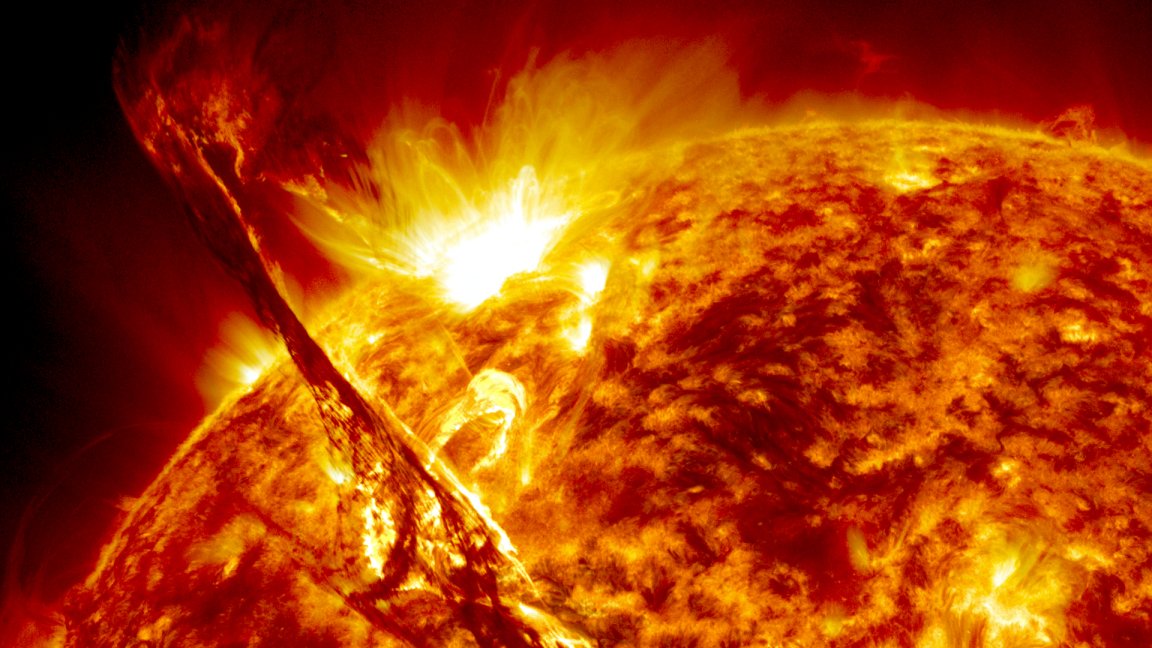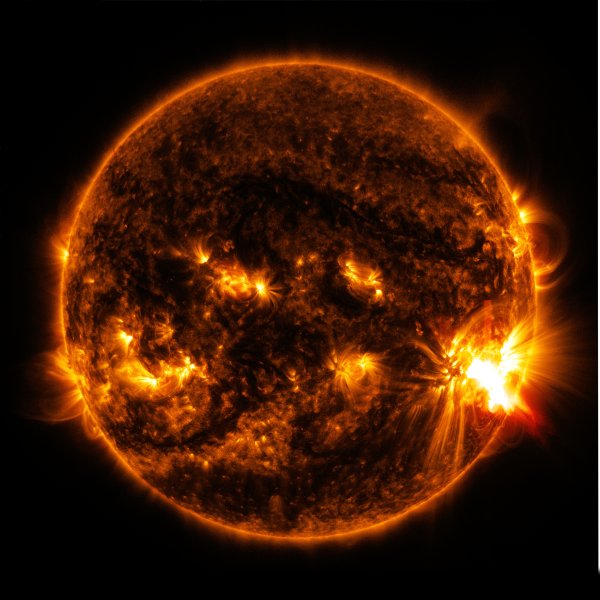
Complete Darkness
In 1977, New York went dark in what many have called the most severe blackout in American history. Panic ensued, shop owners torched their own buildings for insurance profits, and there were two days of absolute confusion and bedlam. While the experience might have better prepared the country for this type of disaster, if the same type of event were to happen in our current advanced technological age, the effects could be even more widespread.
A blackout of this nature has the possibility to happen on a global scale because of the chance of a massive solar storm. Large solar flares and solar storms have the potential to interfere with Earth’s geomagnetic field. This has happened before, and when it does, our technology could be affected. Solar flares can create issues as simple as small inaccuracies in GPS, which creates massive issues not just with personal navigation, but with aviation and precisely tuned clocks.

While this presents a wide array of potential difficulties and disasters, a coronal mass ejection (CME) would be more serious. A much larger burst, CMEs can shoot particles into Earth’s atmosphere and create electromagnetic fluctuations. This can create fluctuations and disturbances on the ground, which could be strong enough to destroy transformers within power grids. This can, quite obviously, cause widespread blackouts (while still interfering with GPS technologies).
These events do not represent the full extent of potential solar storms. In 1859, amateur astronomer Richard Carrington was trying to using glass and projection to study sunspots when “a ray of light had penetrated a hole in the screen attached to the object-glass…for the brilliancy was fully equal to that of direct sunlight.” Now known as the Carrington event, this storm was reported to have started fires, stopped all working electricity, and lit up the sky with auroras.
Widespread Disruption
There is a wide range of severity when it comes to solar storms. But the impacts of these storms range from potentially disastrous, even at the mildest level, to incomprehensibly catastrophic. The Carrington event happened in the mid-1800s, and the effects that it had on the technology of the time were notable and significant. The effect of a similar event occurring during the 21st century would be much worse due to our reliance on technology — for starters, we would probably lose all satellites, causing billions of dollars in damage and confusion as our navigation and communication systems shut down. It is impossible to say with certainty what such an event would lead to, and when or if it might happen.
Hopefully before another major solar event happens, we might at least have the ability to anticipate it. To, at least, mitigate damages, people could be informed of the exact time and nature of the event, lessening panic and chaos. They could also be instructed to stay off the roads, airlines could be entirely shut down, and protective structures could be created/used (or there might be ways for people to maximize safety at home). While these actions wouldn’t ensure safety, being informed would be the key to recovering from the event. NASA is also aware of the potential problems, and is actively researching solutions. The agency says:
[Space weather] is a problem the same way hurricanes are a problem. One can protect oneself with advance information and proper precautions. During a hurricane watch, a homeowner can stay put … or he can seal up the house, turn off the electronics and get out of the way. Similarly, scientists at NASA and NOAA give warnings to electric companies, spacecraft operators and airline pilots before a CME comes to Earth so that these groups can take proper precautions.
You can follow NASA’s space weather forecasts, and rest easy knowing that they are watching the skies (and Sun) for us.